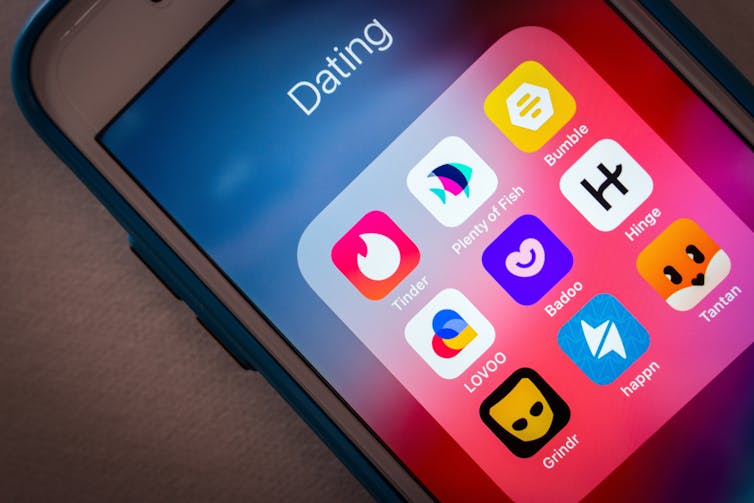Polyamory — being open to having more than one romantic partner at the same time, with everyone’s knowledge and consent — is on the rise, particularly among people below the age of 45.
Yet at the same time, we’re told that younger people are increasingly turning away from romance and dating. On the face of it, these trends appear contradictory. Does Gen Z want multiple partners or none at all? What is going on?
Seen through the right lens, however, they are really two symptoms of the same underlying cause. A fundamental change is underway: our society is learning to respect more diverse visions of a “good life.”
We can break this down by looking at each trend on its own terms.

No one’s 20s and 30s look the same. You might be saving for a mortgage or just struggling to pay rent. You could be swiping dating apps, or trying to understand childcare. No matter your current challenges, our Quarter Life series has articles to share in the group chat, or just to remind you that you’re not alone.
Read more from Quarter Life:
- Workplace besties: How to build relationships at work while staying professional
- Want to be an influencer? Our research shows what you need to know first
- Friend breakups: why they can sometimes feel as bad as falling out of love
Dating is tough
It’s understandable that more younger people are dropping out of the dating game. Whether you’re looking for love, or looking over the shoulder of a friend who is, you probably know how nightmarish it can be.
Dating is expensive. You constantly risk rejection or, perhaps worse, being seen as cringe. Dating apps have undergone serious “enshittification:” once relatively decent and free services are now seen as degraded and overpriced.
And what if you do meet someone? In today’s “typical relationship” — which is still, by and large, a heterosexual, monogamous, marriage-like arrangement — it’s statistically likely that the woman is doing most of the housework and child care, even if she is also the primary wage-earner.

She’s probably responsible for most of the emotional labour, too. Young women have grown up watching their mothers exhausted by this model of normal love, and it’s not surprising if they aren’t looking to replicate it.
On the flip side, young men can increasingly find dating, particularly through apps, demoralizing, and may be tempted to give up. One 2022 study found that 63 per cent of men in the United States under 30 were single, and that half of all single men weren’t looking to date.
Read more: Swipe right or left? How dating apps are impacting modern masculinity
Destigmatizing polyamory and singledom
It can be tempting to focus on the negatives. They are important in their own right. But it’s not just that dating is awful. Something deeper — and less depressing — is going on.
Efforts are being made to destigmatize single life by helping more people see it as a realistic and desirable option.
People are not necessarily being turned off traditional romance, they are being turned on to alternatives: building family in ways that do not resemble the nuclear family model with a romantic monogamous couple at its core.
Once we appreciate this, we can begin to contextualize the other trend, too. Polyamory has slowly been gaining broader acceptance, to the point where Canadian law has taken some steps towards recognizing polyamorous families.
Read more: More romantic partners means more support, say polyamorous couples
You might be thinking polyamory sounds like the opposite of being single, but in a certain respect the two situations are similar: both represent approaches to life that do not presume or prioritize a traditional relationship.
Polyamorous relationships and families can come in all kinds of configurations: four people might live together in a single cohabiting relationship. One person might be involved with two others who aren’t in a relationship with each other, and all three of them might live separately. There is no prescribed formula.
The only relationship style that does come with a prescribed formula is monogamy. And it comes with something else: a customary assumption that we should all be doing it. This is mononormativity: the prescription for everyone to couple up. Being single is one kind of deviation from this norm, and being polyamorous is another.

Persistent stereotypes
If you’ve only ever been in monogamous relationships, it can be challenging to overcome certain perceptions about polyamory. To understand how mononormativity functions to reduce our options, we need only pay attention to the kinds of social stigma attached to both polyamory and singlehood. Polyamorous people are stereotyped as promiscuous, shallow, sex-obsessed and commitment-phobic.
Single people are stereotyped as lonely, pathetic and afflicted by some irremediable flaw that’s preventing them from forming relationships. If you’re a young person who is single, you’ve likely already encountered some of these stereotypes.
Correspondingly different emotions go along with these stereotypes: polyamorous people might evoke anger or disgust, while single people evoke pity or contempt.
What these stereotypes and reactions have in common is that they signal a lack of respect; an inability to see value in these kinds of lives. And having a life we know won’t be respected is challenging — not only do we question ourselves in so doing, but a lack of support from friends, family and society at large makes it harder to build the life we want.
Read more: Wish you were in an open relationship? So do many Canadians
On the other hand, if mononormativity’s grip on us is starting to weaken, we should expect to see the alternatives being more widely chosen: those who want them are no longer under as much pressure to choose otherwise. As society gradually moves to accept a more diverse range of lives as “good lives,” we are better able, and better supported, to authentically choose how we want to live, and with whom.
We should not be overly optimistic about this. Nuanced representations of polyamorous relationships and single life are still lacking, and the stigmas are still very much a reality. It’s also expensive to live alone, and most of our social and legal structures are still designed around the assumption that all relationships are monogamous.
Social stigma is still very real. If you’re experiencing its effects, it is important to find supportive communities, whether online or in person. Seeking advice and reading can also go a long way towards addressing feelings of isolation if the people around you aren’t understanding of your choices.
The two apparently contradictory trends — young people being more likely to choose polyamory and more likely to choose being single — give me optimistic feelings that the kids are alright. Taken together, these trends suggest young folks are increasingly resistant to the pressure to be in a “normal” relationship, and that they are finding value in a more diverse range of lives and loves.
Existentialist philosopher Simone de Beauvoir tells us that authentic love must be grounded in an appreciation of each person’s full selfhood: their freedom to become who and what they choose. She said that in 1949. Perhaps we are starting to listen.

